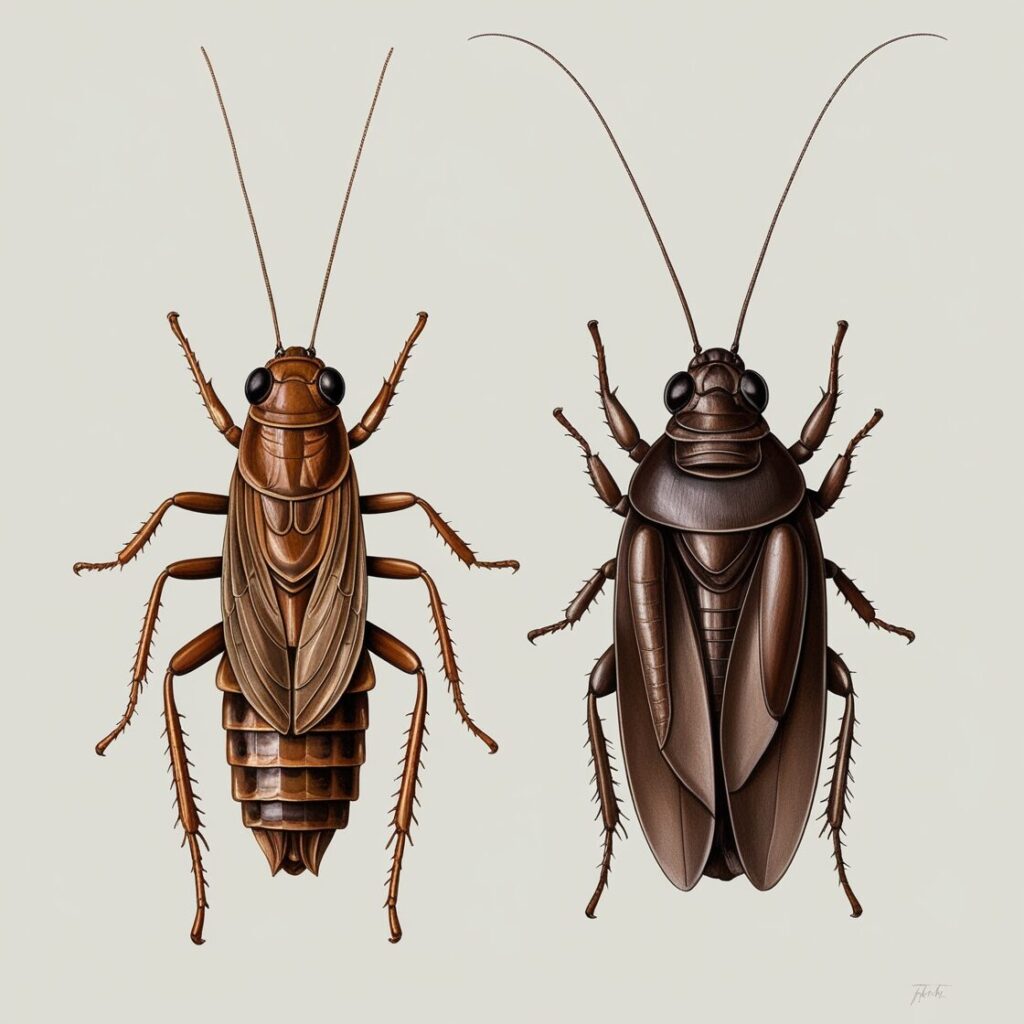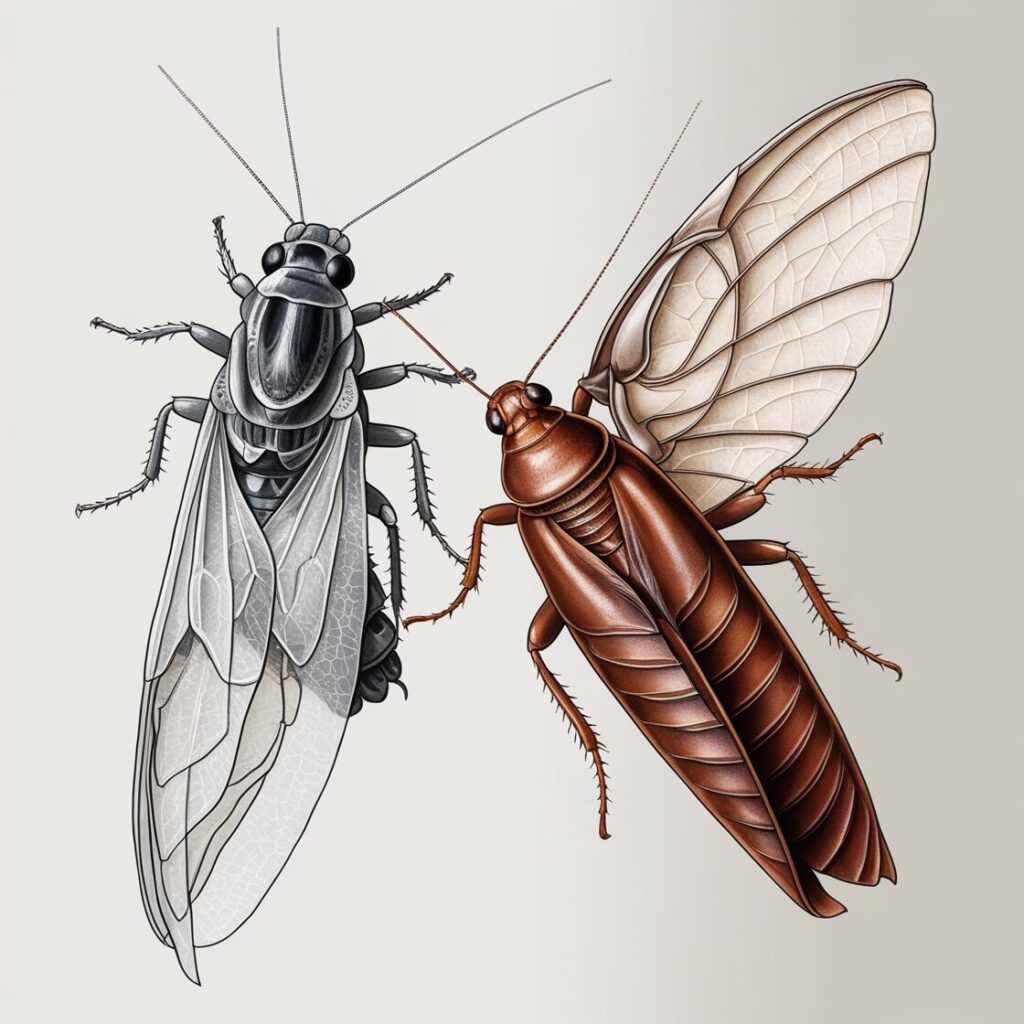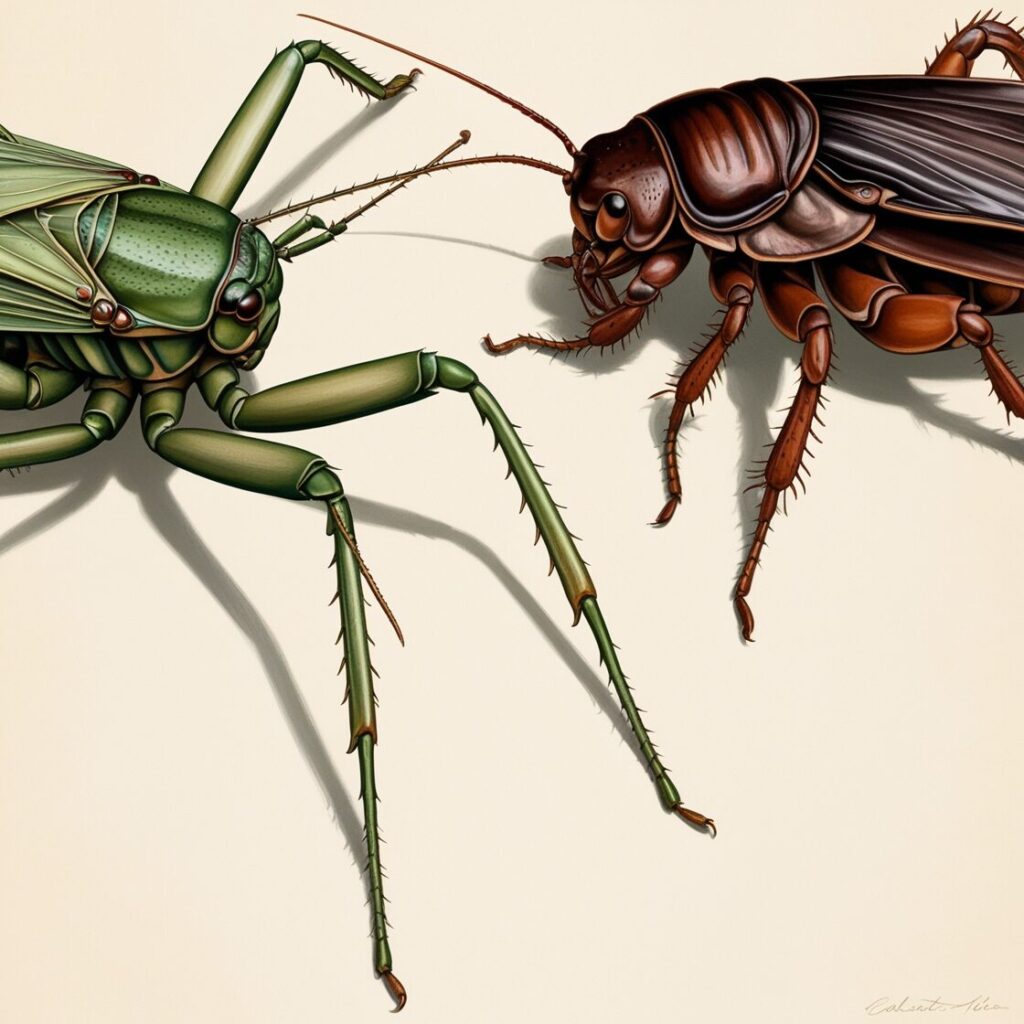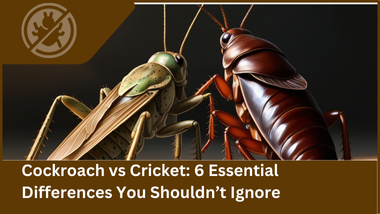Can’t believe why you are dealing with cockroach infestation when you just treated it. Could it be that you mistook the cricket for a cockroach and used pest control for the cockroach instead of the cricket.
Don’t worry as this blogpost has got you covered. This post will tell you all the difference between a cockroach and a cricket. Their difference ranges from size, colour, shape and many others.
Knowing how to tell the difference between these two insects can save you a lot of stress and money.
Let’s take a closer look at cockroach vs cricket so that you can easily distinguish the two and take appropriate action if necessary.
1. Size
At first glance, cockroaches and crickets may seem similar in size, but there are some subtle differences. Cockroaches, particularly the American species, are usually between 1.5 and 2 inches long. They tend to stay low to the ground because all their legs are roughly the same length.
Cricket: Crickets can vary widely in size, from as small as 0.2 inches to about 2 inches. One major difference is how they stand: crickets have large, powerful back legs that give them an elevated appearance compared to cockroaches.
Crickets’ spring-loaded legs help them leap great distances, making them seem more agile. Cockroaches, while fast runners, don’t jump, which is an easy way to tell the two apart.
2. Color
The colour of the insect is another reliable way to distinguish between cockroaches and crickets. Cockroaches come in brown, gray, black, or tan shades, depending on the species. For example, the German cockroach is light brown, while the American cockroach is more reddish-brown. Some cockroaches even have a shiny exoskeleton.
Crickets, on the other hand, come in a wider range of colors, including black, brown, red, and even green. House crickets are typically light brown or gray, while field crickets are darker, either black or dark brown.
Though both can be brown or black, if you see an insect that’s red or green, it’s almost certainly a cricket since cockroaches don’t come in those colors.
3. Cockroach vs Cricket: Shape

The body shapes of cockroaches and crickets are noticeably different.Cockroach: Cockroaches have a broad, oval-shaped, and slightly flattened body. Their wings fold neatly over their back, creating a smooth, streamlined appearance. Their head is small compared to the rest of their body, and they seem more solid and compact.
Crickets have a cylindrical, elongated body, making them appear slimmer than cockroaches. Their wings may not cover their entire thorax, so their body segments are more visible. Their long legs also contribute to their sleek and elongated appearance.
If you’re looking from above, cockroaches will appear broader and more robust, while crickets will look leaner and more segmented.
4. Wings

Though both insects have wings, their appearance and use of them differ greatly. Cockroaches’ wings cover their entire thorax and blend seamlessly with the rest of their body. Although cockroaches have wings, they rarely use them to fly. Occasionally, they may glide short distances if disturbed.
Crickets’ wings might cover part of their thorax or extend beyond it, but they often seem more distinct than cockroaches’ wings. Crickets, however, are not known for flying. Instead, they rely on their powerful legs to jump away from danger.
If you notice wings that fit snugly over the insect’s body, it’s probably a cockroach. Crickets’ wings, on the other hand, are more visible and don’t blend into the body as neatly.
5. Legs

Cockroach vs Cricket legs are one of the most striking differences between these two insects.
Cockroach: Cockroaches have six legs, and all are relatively similar in size. These legs are equipped with tiny spines that help them run quickly and even climb walls. However, they lack the specialized jumping legs that crickets possess.
Cricket: Crickets’ hind legs are significantly longer than their front legs. These specialized legs allow them to leap several feet in a single jump, making them much harder to catch. These legs are large enough that they often extend past the body when at rest, making them easy to identify.
If the insect has noticeably long, angled legs meant for jumping, it’s almost certainly a cricket. If the legs are more uniform in size and the insect seems to scurry rather than hop, you’re probably dealing with a cockroach.
6. Sounds
Perhaps the easiest way to distinguish between a cricket and a cockroach is by the sound they make—or don’t make.
Cockroaches are generally silent. Some species, like the Madagascar hissing cockroach, can make a hissing noise when disturbed, but most cockroaches found in homes don’t produce any noticeable sound.
Crickets are famous for their loud chirping. Male crickets rub their wings together to produce this sound, which serves as a mating call. Chirping is most often heard during the evening hours when crickets are more active.
If you hear a persistent chirping sound at night, it’s almost certainly a cricket. Cockroaches, even if present in large numbers, will remain silent.
Conclusion
Now that you know the six main differences between cockroaches and crickets size, color, shape, wings, legs, and sound—you should be able to tell these insects apart with ease.
While crickets are relatively harmless and likely to leave your home on their own, cockroaches can signify a more serious problem, especially if you find multiple.
If you determine that the insect is a cockroach, it’s important to act quickly, as they reproduce rapidly and can be difficult to control without professional help.
If the insect in question is just a cricket, rest assured it poses little threat. Knowing how to distinguish between these two common insects can help you take the appropriate steps to keep your home pest-free.
